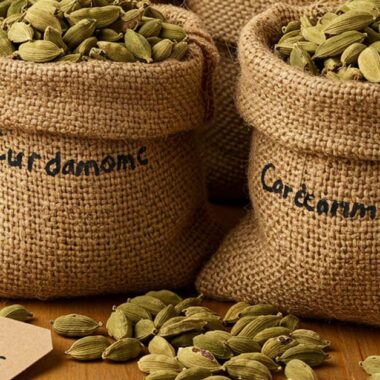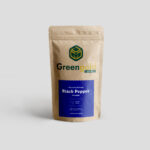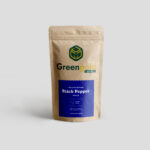Cardamom is a moisture-loving crop that thrives in humid, well-irrigated environments. However, water scarcity caused by climate change, deforestation, and inefficient irrigation methods can reduce yields and spice quality. By adopting effective water conservation strategies, farmers can ensure healthy growth, higher productivity, and sustainable farming practices.
Let’s explore how water conservation techniques can improve cardamom yields and maintain soil health.
🌱 1. Mulching to Retain Moisture
✔️ Mulching with organic materials (dry leaves, coconut husks, or wood chips) reduces water evaporation from the soil.
✔️ It helps regulate soil temperature, preventing stress on cardamom plants.
✔️ Mulch also suppresses weeds, reducing competition for water and nutrients.
💡 Impact: Less frequent irrigation needed, better root health, and higher yields.
💧 2. Drip Irrigation for Efficient Water Use
✔️ Drip irrigation delivers water directly to plant roots, reducing wastage from runoff and evaporation.
✔️ It ensures consistent moisture levels, crucial for flowering and fruit development.
✔️ Farmers can use fertigation (applying fertilizers through drip systems) to maximize nutrient absorption.
💡 Impact: 30-50% water savings, reduced fungal diseases, and higher productivity.
🌦️ 3. Rainwater Harvesting for Sustainable Supply
✔️ Collecting and storing rainwater in ponds or tanks provides natural irrigation during dry periods.
✔️ Contour trenches and check dams help recharge groundwater and prevent runoff.
✔️ Storing monsoon water ensures farmers have a backup water source during dry months.
💡 Impact: Reduced dependence on borewells, better drought resistance, and cost savings on irrigation.
🌍 4. Agroforestry for Water Retention
✔️ Planting shade trees helps trap moisture in the soil and reduce water loss through transpiration.
✔️ Trees prevent soil erosion, keeping the land fertile and reducing irrigation needs.
✔️ Native trees also create a cooler microclimate, which benefits cardamom plants.
💡 Impact: Improved soil moisture retention, less water stress, and better quality cardamom pods.
🏞 5. Terracing and Contour Farming to Prevent Runoff
✔️ Cardamom is often grown in hilly regions, where water runs off quickly.
✔️ Contour farming (planting along natural land curves) slows down water flow and allows soil to absorb more moisture.
✔️ Terracing (creating step-like structures) reduces soil erosion and improves water retention.
💡 Impact: Less water loss, stronger plant roots, and higher survival rates for young plants.
🌾 6. Cover Crops to Improve Soil Water Retention
✔️ Leguminous cover crops (such as beans or clover) help retain moisture and add organic matter to the soil.
✔️ They also fix nitrogen, reducing the need for synthetic fertilizers.
✔️ Cover crops prevent soil compaction, allowing better water infiltration.
💡 Impact: Less irrigation needed, healthier soil, and stronger plant growth.
🔬 7. Smart Water Management with Technology
✔️ Soil moisture sensors help farmers monitor water levels and irrigate only when needed.
✔️ Weather prediction tools help plan irrigation schedules based on rainfall forecasts.
✔️ Automated irrigation systems reduce water wastage by supplying exact amounts of water.
💡 Impact: Precision irrigation, lower water costs, and higher efficiency.
🌿 Conclusion: A Sustainable Future for Cardamom Farming
Water conservation is essential for sustainable cardamom farming. By adopting efficient irrigation, soil moisture retention techniques, and rainwater harvesting, farmers can increase yields, reduce costs, and protect the environment.












